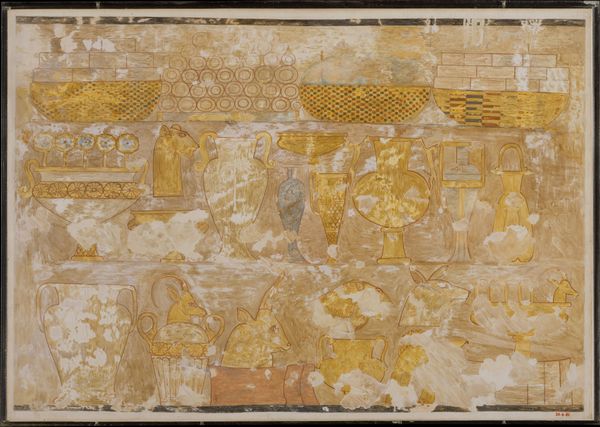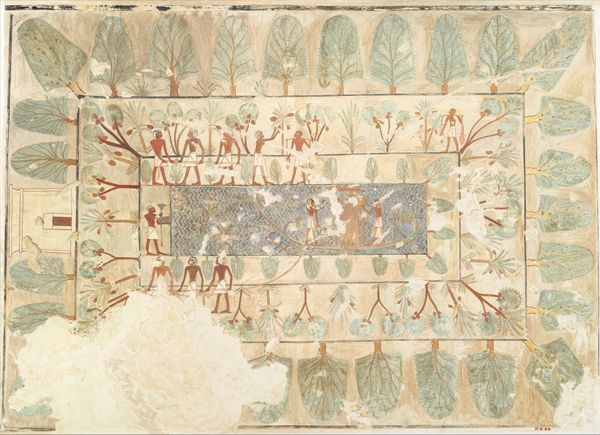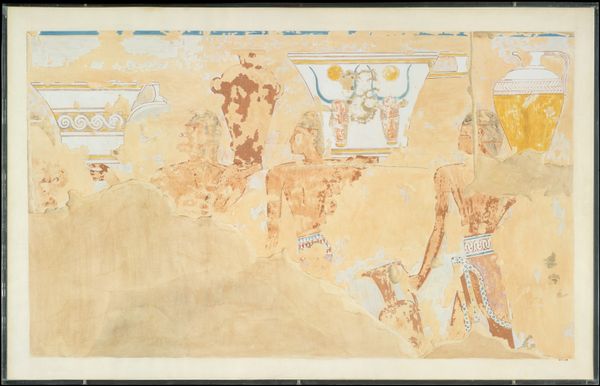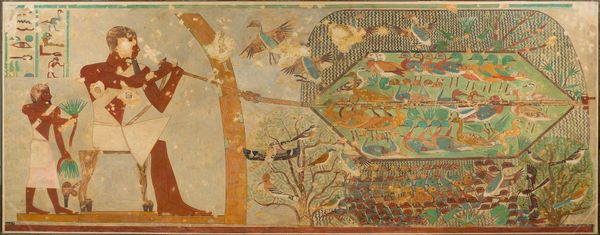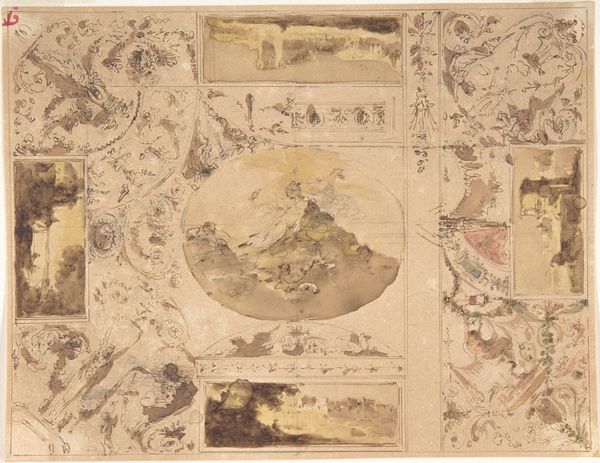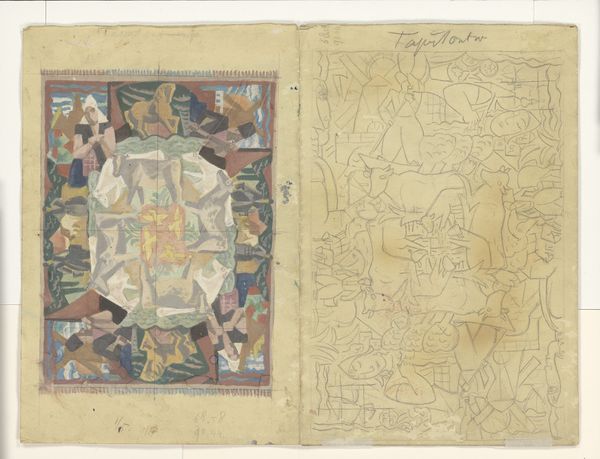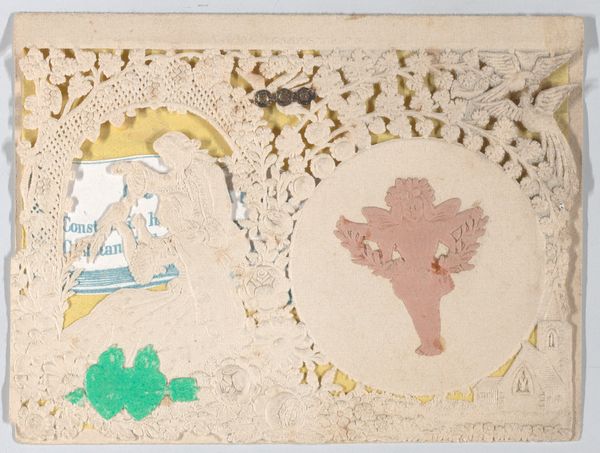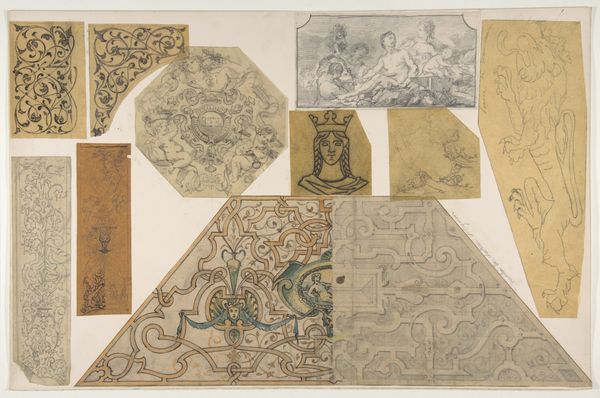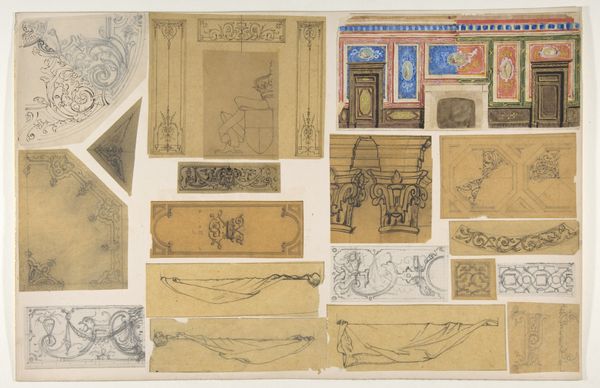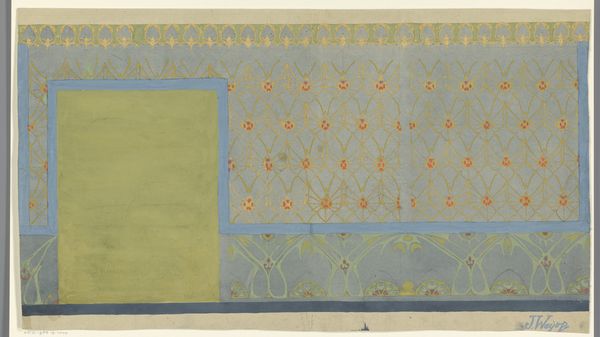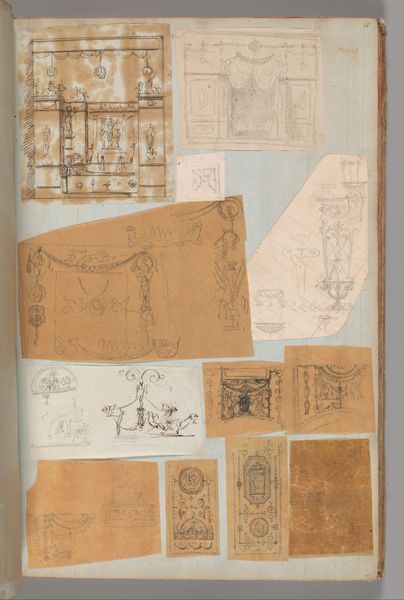
Gifts from Western Asia, Tomb of Rekhmire 1504 BC
0:00
0:00
tempera, painting, fresco
#
water colours
#
narrative-art
#
tempera
#
painting
#
ancient-egyptian-art
#
fresco
#
egypt
#
geometric
#
ancient-mediterranean
#
history-painting
#
watercolor
Dimensions: facsimile: h. 60.5 cm (23 13/16 in); w. 23.5 cm (9 1/4 in) scale 1:1 framed: h. 26.7 cm (10 1/2 in); w. 63.5 cm (25 in)
Copyright: Public Domain
Editor: This watercolor, "Gifts from Western Asia, Tomb of Rekhmire," is attributed to Nina de Garis Davies and dates back to 1504 BC. I find the fragment quite compelling, and the remaining detail provides insight into how the goods were created and what the trading relationship between Western Asia and Egypt was like. What can you tell me about the materials and context? Curator: Precisely. The work, though fragmented, speaks volumes about materiality and production. Notice the depiction of vessels – likely crafted from specific clays sourced and fired using particular techniques. And then there are the contents, presumably items valued in Egyptian society and acquired through laborious means. Editor: Right. It shows not just goods, but the social and economic networks involved in procuring them. Are these types of materials and construction processes exclusive to this period, or are these art making techniques consistent? Curator: These visual representations are crucial historical documents in many ways. By depicting them with such care in this painting, the goods acquire new importance. This watercolor is evidence of both the exchange and labor systems of ancient Egypt, as well as those of its trade partners. This exchange challenges traditional views of labor and consumption. It invites us to contemplate labor beyond aesthetics, it is essential to consider the context of production: who created these goods, and under what conditions? The construction tells an important narrative of the goods and labor of both civilizations, it may very well speak about power relationships between civilizations. Editor: That’s fascinating. I’d never thought about how a painting could also represent the material conditions of its own time! Thanks. Curator: And how those depicted trades become history for those societies as well, how important those things are and the techniques they imply! Glad to offer an expanded view.
Comments
No comments
Be the first to comment and join the conversation on the ultimate creative platform.
